Here's The TRUTH About Bass Fishing In The Fall And Not Catching Anything - Break The Cycle! These Fall Bass Fishing Tips Work FAST
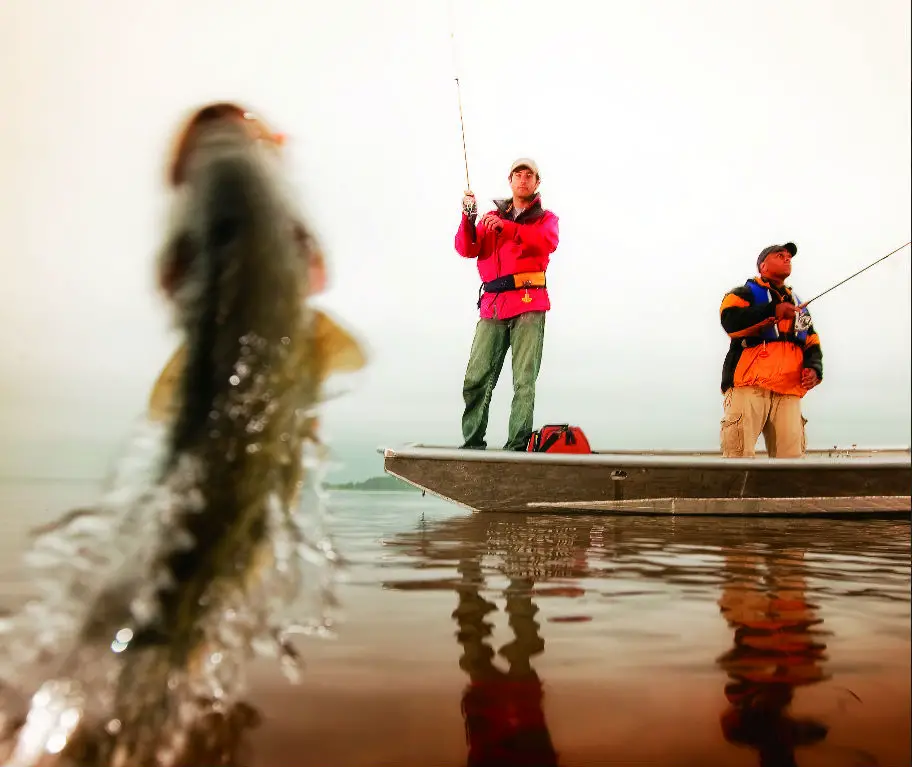
Since the weather cools down in the fall I notice I tend to go fishing a lot more. Most other anglers (who also happen to be hunters) are in the woods this time of year. This gives me the lake to myself!
However, fall fishing was very difficult for me to figure out in the beginning.
It seemed like the bass were scattered all over the place. They would be in a specific location one day, and be gone the next.
To make matters worse, when I did find bass I watched them following my lures, but not biting!
I tried a variety of baits, and the bass were interested but not willing to hit. Jigs, worms, flukes, and crankbaits were all rejected.
On many days, I would leave the lake frustrated, not catching a single fish.
That was then I discovered this secret I noticed pro anglers and expensive guide were keeping it to themselves.
What is that secret to fall bass fishing? Well I’m about to tell you…
To be honest, it’s a combination of several factors…
The first is knowing what lures work the best in the fall, accurately mimic what prey the bass are feeding on, which allows them to get the most performance out of the lure.
The second is to gain mastery in the art of what colors and patterns work best in the fall, so they can attract more bass, which allows them to avoid spooking any bass from biting.
The third is understanding the fall turn-over is and how it affects the lake, so they know how to present a specific lure, so they can stay away from areas that won’t hold bass.
The fourth is being able to catch all those bass that were suspended during the summer, which are now the largest bass in the lake, and are currently moving up and fattening up for the autumn. That means not only will you have the lake to yourself, but you could catch your personal biggest and best fish!
And much, MUCH, more…
WARNING: There’s a lot of information about this subject you’ll probably want to come back to. No one expects you to remember all these tips. We know your time is precious, so we really tried to over-deliver in value for you. Additionally, we frequently update reports like this, so you’ll want to stay up to date with any changes or additional tips we include for you.
We found that the easiest way to save and bookmark this report so you can come back to it later is to share it on your favorite social media platform, especially if you use your phone to get important tips like the ones in this report here…
Click on your favorite social media buttons to remember this page now!
A Newbie's Background On Fall Bass Fishing…
Let me share a quick story with you…
There I was, a newbie angler desperately trying to catch bass.
Thing is, at the time I was trying to figure out where to find bass and to know what lures work in the fall.
The big problem was when I stumbled upon a bass I couldn’t figure out how to make the bass bite my lure and NOT just follow it! It is so frustrating to spend a TON of hours on the lake and not have a single bass take your lure…
I was ready to just give up on fall bass fishing altogether and go back to strictly hunting, then I realized I was literally walking away from catching hundreds of bass.
Then, as if by chance, something amazing happened…
I went to my wife’s high school reunion and I struck up a conversation with a private fishing guide who also was a former professional bass angler. Over a few “frosty beverages” he began to tell me all his secrets, on where to find bass and specifically what lures attract and catch bass in the fall and why!
Instantly it became crystal clear to me how to choose the best lure and turn it into a bass catching “magnet”, because I saw it wasn’t about casting out any random lure, it was about casting out the right lure for that specific situation.
Now I could quickly and confidently choose the right lure for the job.
My plan was to fish more consistently to make sure the blueprint I was given really worked..
So I started going out every day that I had available. But I didn’t stop there.
I started devoting a lot of time to researching every article and literally buying book after book in order to learn as much as I can about fall bass fishing.
I even traveled across the country for in-person on the water mentoring lessons on how to be a better bass fisherman during the fall.
After that, I applied the same fishing strategies to different bodies of water.
Bottom line: In the end I was able to 10X my catch rate and the size of the bass was significantly bigger, all in less than 60 days!
Building on that success, I decided to create this fall bass fishing blueprint so that I could come back to it whenever I wanted.
It wasn’t until I began answering questions in forums that I noticed there were other anglers like myself who were struggling with trying figuring out how to catch bass during the fall.
So to avoid answering the same question over and over again, I published my blueprint.
I want to help clear up any confusion on fall bass fishing. That is why this blueprint makes on-the-water decisions a LOT easier and faster and cuts down our preparation/ research time by 95% or more.
I’m so excited to share this with you so you can get these types of results too!
Best of all it’s free and you can come back to it anytime you want…
All I ask in return is to share this with anyone who may find it helpful. That’s all.
Figuring Out What Stage Of Fall Your Lake Is In First…
The best research has shown that the best way to find and catch fall bass is to understand what stage of the fall your lake is at.
Once the anglers master that concept, finding and catching bass in the fall is very easy.
Don’t feel overwhelmed. We’re going to break it down what the pros are not telling you into easy to understand sections.
Stage 1: The Fall “Turn Over” or “Fall Transition”
Let’s begin to understand the fall turn over as if you were looking at a time line…
Starting in early fall…
In the most simplistic terms, the fall turn over is a phenomenon that is commonly seen on lakes in early fall where warm shallow waters mix with the colder deeper waters.
As the autumn air temperature cools, the water temperature on the surface, or also cools.
The cooler surface water (which is highly oxygenated) begins to sink down into the deeper water (which is poorly oxygenated) …
This causes a mixing effect of all of the water in the lake, resulting in odd pockets of good and bad oxygen all throughout the lake.
As a consequence, you’ll see that a lot of bass will begin moving to regions where there is more oxygen in the water.
The water in most parts of the lake literally mixes, or “turns over” or “transitions” from stable to unstable.
Luckily this transition is temporary. Normally it lasts a week or so.
Many times professionals will know a lake is in its turn over stage if the water color is dingy brown, or it smells stinky or slightly rotten.
This causes the bass to initially scatter and bass can be very, very hard to catch…
The mixed water causes the bass some breathing difficulty, but also makes them very sluggish… it’s kinda like if the bass in the lake were behaving as if there was an algae bloom.
If you’re on the water when during a fall turn over, then the best suggestion is to find water that has not turned over yet…
Not all of the lake will turn over at once.
So the best suggestion would be to find water that has some form of current running through it. Often anglers will be able to find and catch bass in these locations.
Focus on the upper end of the lake in the early fall, you’ll find that it holds most of the bait.
Stage 2: The Fall Feed
So then what happens next?…
After a week or so, the oxygen redistributes throughout the lake and the bass become acclimated to the change.
Once their acclimation has finished, the bass go from sluggish to feeding frenzy monsters.
This is commonly called the “Fall Feed”. It normally occurs in early to mid fall.
Initially bass will gorge themselves on shad.
Shad will follow the plankton which now start to migrate into the mouths of large creeks and coves.
Bass follow the shad and will start to school up into moderate to large schools.
By this time the water temperature is still in the 70s and 60s and so bass typically position themselves in 12-30-feet of water.
Stage 3: Late Fall
The water temperature will be in the low 50s, or even the upper 40s, which will cause a large number of bait fish (like shad and herring) to leave the main creeks and tributaries and migrate to the main river channel.
Bass will follow these bait fish back out to the main lake as they travel from the backs of creeks.
During this season, steep creek channel banks, creek channel swings, and bluff walls are one of the best spots to catch bass.
Many times you’ll notice there will be huge schools of bass stacked on one spot.
Where To Find Fall Bass
Read carefully...
Early Fall / Fall Transition
During the actual fall transition the bass could be anywhere, however to help narrow it down many professionals and fishing guides will go to where there is a constant supply of oxygen…
Areas where there is current, water or wind driven.
Look for these areas:
- Creeks that have water flowing into it
- Channel swings (the sharper the better)
- Ridges or rocky high spots near a creek channel or main river channel
- Points near near a creek channel or main river channel
Other areas that are often overlooked:
- Green vegetation (preferably the areas that will hold vegetation year round)
- Shell beds (mollusks are filter feeders and require current to survive)
Post Fall Transition / Middle Fall Feed
As the transition dissipates and turns into the Fall Feed the look for bass in these locations:
- Main lake humps that are attached to a main lake point
- Large steep chunk rock banks 45-degrees or greater
- Ledges
- Large ditches or “funnels” between two large submerged points
- Channel swings
- Secondary points that are close to the mouth of the cove
- Submerged road beds
- Bridge pilings that are close to the mouth of the cove. Typically the pilings that will hold the most bass will be closest to the shore, or if the bridge piling is near the creek channel)
Late Fall / Early Winter
In late fall when the water temp is in the 60s look in these locations:
- Creek channels in the 5-10-foot range, particularly inside creek channel swings
- Secondary and tertiary points deep in the cove with either rock or timber nearby
- Rocky transition areas from chunk rock-to- pea gravel. It’s even better if it is also on a channel swing or a steep bank.
- Stumps or brush near or around shallow channel swings or points.
As the water continues to cool from the 60s to the 50s look for these locations:
- Secondary points
- Bluff walls
- Submerged vertical timber
- Flats near secondary points, deeper ledges, submerged vertical timber
- Humps that are attached to a main lake or secondary points
Fall Bass Fishing Lures
Before you hit the water you’ll make sure you take along the best bass lures for fall.
There are several best fall bass lures that you’ll want to include in your box.
Luckily there are a variety of baits to deploy, from crankbaits, lipless crankbaits, jerkbaits, walking topwater baits, finesse swimbaits, underspin jigs, finesse jigs, so you can catch those monster bass while they’re eating!
Many anglers opted to use larger lures because they feel that bigger bass eat bigger lures.
However, don’t get hung up on only using large lures, you can catch a monster bass on a tiny lure.
To make it easy to understand I’m going to list two of some of the most common baits professionals will fish in each stage of fall; early fall, mid fall, and late fall.
Early Fall Bass Lures | Fall Transition Bass Fishing Baits
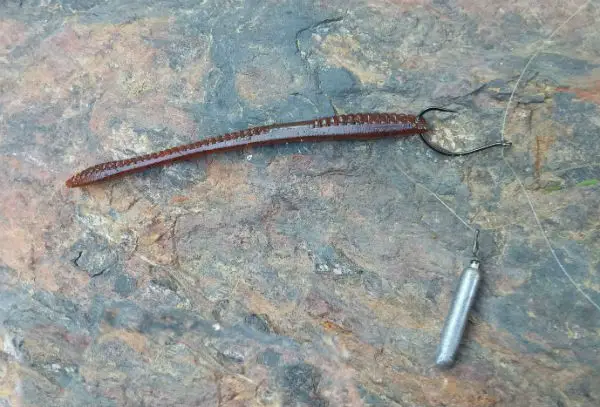
Drop Shot – The drop shot can be utilized at any depth and can be paired with nearly any soft plastic bait.
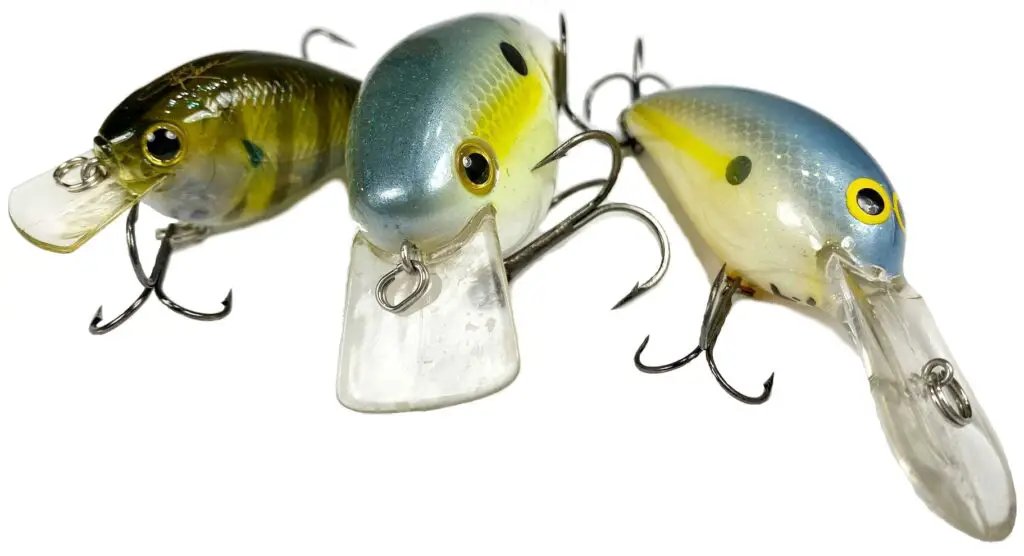
Crankbaits. Crankbaits are great because you can target the exact depth in which the bass are holding. These little lures are also awesome because you can really match the hatch with most color patterns.
Mid Fall | Fall Feed

Spinnerbait – The spinnerbait will attract and catch fish in the breeziest conditions. Spinnerbaits can be fished really slow or very fast.
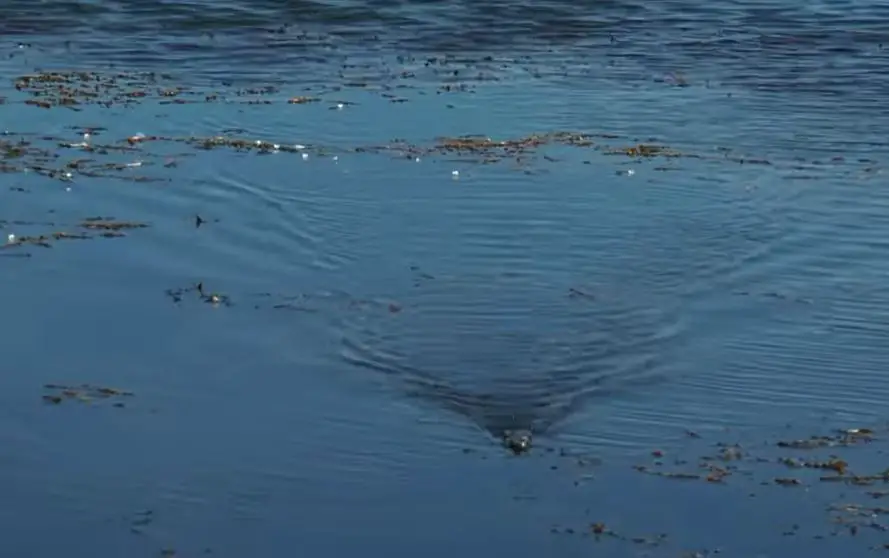
Walking bait – When you see bass busting shad on the topwater, throwing a walking bait is an absolute must.
late Fall / Early Winter
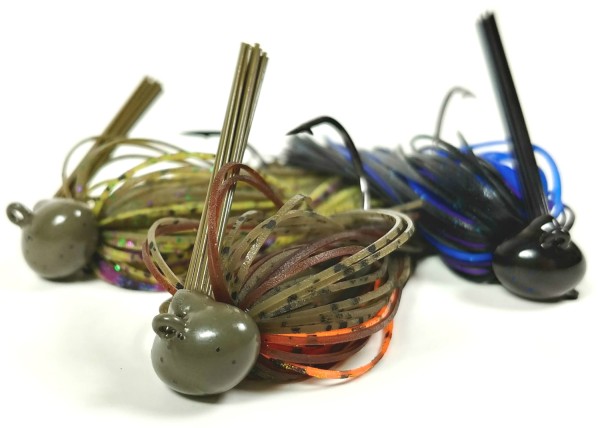
Jigs – Jigs can be used during the entire fall season, but really excel in late fall.
when you see the bass stacked up on your sonar. Crawl a jig with a finesse cut skirt.

Flatsided crankbaits – When the water temperature is in the 50s and the color is off, a flatsided is perfect.
Works well if you go up rivers and into creeks and target rip-rap banks and bluff walls.
Before you go on…
These baits are just the tip of the iceberg, there is sooo much more detail that has to be discussed on how exactly to fish each of these lures in the fall.
If you are tired of trying to fish these same lures, but not seeing the success other anglers are having, then you must read our most recent research report on the best bass lures for fall.
Not only will it go into insider information on how and where these baits should be fished, but will also go into how you can save a ton of money by not buying the wrong lures, that way you won’t have to work overtime to pay yourself back!
Click here to get the insider information you deserve, 37 Best Fall Bass Lures, #7 Will Shock You.
Fall Bass Colors and Patterns
You may be asking yourself, what colors do bass like in the fall?
Brown, green pumpkin, white, ghost patterns, purple, and any natural color that imitates a crawdad or a bait fish are the ideal colors for fall bass fishing.
Additionally, take a look at the hand Mother Nature gave you…
If the conditions are clear, then pros will choose a transparent shad color first.
However, if the skies are dark or cloudy, then choose an opaque color pattern with some bright colors like chartreuse and it.
In early fall, most bass can be found on main lake points, structure, and channels will be feeding on shad… so choose the appropriate baitfish color.
In mid fall the bass are normally still concentrating feeding on baitfish, so having some appropriate baitfish color and pattern is needed.
If you notice the bass are pushing further back into the cove, the choosing some lures that are crawfish colored or have bluegill color patterns will work great.
As the weather really starts to get cold in late fall/ early winter the bass most likely move back into the deepest of coves, or back out to mid points.
Once again, crawfish colored, bluegill color patterns, and even some white shad patterns work well.
When Is The Best Time To Go Fishing In The Fall?
The best time to go fishing in the fall is around the middle of the day, when the sun and temperature are at their greatest.
This keeps the water at its hottest temperature for the rest of the day, giving the bass a time to warm up. Starting fishing at 11 a.m. or 12 p.m. is usually a good idea.
Fall provides plenty of potential to catch a variety of gamefish from coast to coast, as cooler water temperatures stimulate hot bites for everything from catfish and crappies to walleyes, sunfish, and of course bass.
What Do Bass Eat In Fall?
Fish (such as shiners, minnows, shiners, or shad) and crawfish serve as the primary source of food.
Considering all types of bass are meat-eating hunters, the best lures are those that closely resemble their natural food.
Additionally, frogs, worms, leeches, bugs, other types of fish (suckers, yellow perch, bluegills, baby catfish, smaller bass), snakes, mice, small birds (such as ducklings) and, on exceptional circumstances, tiny turtles are all eaten by bass.
Bass eat whatever they want, and they don’t discriminate.
Checkout These Other Fall Fishing Articles...
- The Real Secret To Fall Bass Fishing [57 Tips, Patterns, Techniques To Catch Fall Bass]
- Experts Reveal 37 Great Fall Lures That Work and Are CHEAP!
- Are Crankbaits Good In The Fall? [Little Known Ways to Get More Bites]
- The Coolest Lipless Crankbait DIY Hack You Don’t Know About
- Best Crankbait Rods Under $100? (And Which I’d Buy On A Budget!)
- Best Jig Rod for Bass Fishing [Review Guide]
- Best Rod For Senko, Shaky Head, Wacky Rig, Neko Rig, Ned Rig – Finesse Fishing [Buyer’s Guide]
- FINALLY! Comprehensive Drop Shot Rod for Bass Fishing Review Guide
Other Bass Fishing Articles Just For You...
Selecting Early Summer Bass Fishing Lures [Avoid 5 Common Mistakes]
A Complete Buyer’s Blueprint On The Best Early Summer Bass Lures On The Market Today! When it comes to bass fishing, choosing the right lure
Early Summer Bass Fishing [Avoid These 3 Sneaky Lies]
Learn these closely guarded secrets early summer bass fishing … and… dramatically boost your advantage over other anglers! Late spring to early summer bass fishing
Fear The Finesse? 7 Ned Rig Fishing Secrets Exposed!
Conquer the Fear of Finesse… and… Unlock the Potential Ned Rig Fishing – TODAY! Fellow Angler… Like most of you I’m pretty set in my
Fishing Spawning Bass [18+ Lures & Gear]
Get Ready For The Spawn Now When bed fishing, stealth is of the biggest essential tip. Instead of racing forward with a trolling motor, anglers
[2024 Editors Choice] Picking The Best Bass Fishing LINE For ANY Budget
What is the best bass fishing line? | What is a good fishing line for bass? The best type of bass fishing line is based
Drift Sock Basics – What It Is A Drift Sock & How To Use It [2024 Quick Start Guide]
What Does A Drift Sock Do? | Why Use A Drift Sock? photo cred: WLUK We’ve ALL been there… you work your butt off the

